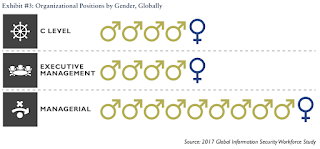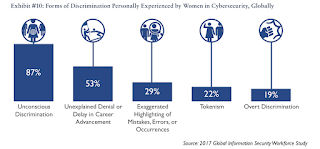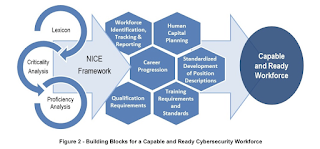This week I brought some 360° cameras to the 2017 ECOO Conference to show how (kind of) easy it is to make immersive media for virtual reality viewers like Google Cardboard. I brought along my favourite 360 camera, the Ricoh Theta (physical controls, good shape, very intuitive to use, easy to manage and produce files), and some others:
- a Samsung Gear360 4k camera (harder to access physical controls buried in menus, awkward shape, files that are such a pain to use in the Samsung software that it will take you days to turn out content)
- a 360Fly 4k not-quiet 360° camera (awkward wireless controls over smartphone, doesn’t stitch together 2 180° images into a full view, water/cold proof and tough, easy to manage files, useful time lapse functions built in)
- at the last minute I brought along the Instapro 360 8k professional camera, but it demands a special type of SD memory card so I couldn’t make use of it. The software and hardware is also very difficult to manage – it’s going to take a while to figure this camera out.
360° cameras offer a unique opportunity to capture a moment in a way that hasn’t been possible before. When combined with immersive VR viewers like Google Cardboard, full systems like HTC’s Vive or upcoming Google Daydream platforms, 360 video and photography allow the viewer to inhabit the media, looking out into it as a part of it rather thank peering at it through a framed window as we’ve always done before.
| This is our presentation from our Minds on Media VR & 360 Media Station from #BIT17 |
The examples below show just how 360 images can be directed like former ‘windowed’ media or left open and viewer directed:
#BIT17 keynote about to start – Spherical Image – RICOH THETA
Teaching visual intelligence will become much more important in the future if 360 media and immersive virtual media viewing become the new norm. If your audience is too visually ignorant to make effective use of your media they won’t recognize the value in it. I wonder if you won’t see directed views of 360 media done by people who can still provide the majority of people who aren’t interested in building up visual media fluency the chance to enjoy media at its maximum effectiveness.
Beyond the director/audience change in power there are also a number of challenges in producing effective 360 media. The biggest problem is that the camera sees everything, so you can’t have a crew out of sight behind the lens because there is no out of sight. We’ve gone to ridiculous lengths in producing 360 video for our virtual school walk through in order to try and let the viewer feel like they are immersed in the media without drawing their attention to the apparatus that is being used to create the media.
Tools like GiimbalGuru’s 360 friendly gimbal that minimizes wobbles that are much queasier in immersive VR viewers than on screen helps the process. This gimbal is 360 friendly because unlike other camera gimbals that block views to the sides and back, the GimbalGuru 360 is vertically balanced and so stays out of the shot. One of the issues with the Samsung Gear is that the short handle means you have a lot of hand in any photo. The shape of the Ricoh Theta minimizes that problem. A good 360 camera should be stick shaped, not stubby to minimize hand in the shot.
The last piece on 360 media making concerns the audience. At the ECOO Conference keynote the ever aware Colin Jagoe asked the obvious question, did you get everyone to sign waivers? It’s a question you see on lots of people’s faces when they see you take a 360 photo or video. The answer to this runs back to the idea of a director or photographer directing the viewer’s vision.
If take a photo or video of a person, I’m pointing the camera at them and they are the subject of it. As the subject of a piece of media it’s fair to ask if that subject should have a say over whether or not I can make them the subject of my media making. However, since the 360 camera isn’t taking a picture of them (it’s taking a picture of everything), they aren’t the focused subject of my media.
The assumption they are working under is one that has been drilled into us subconsciously by the directed, ‘windowed’ media we’ve had up until now. If someone points a camera at you it is about you, at least mostly. If someone takes a 360 image in the same moment, you are just one of many possible focuses in that image. If I had any advice for those pursed lips I see whenever I take a 360 media image it would be, ‘chill out, it’s not all about you.’
The law around this is fairly straightforward: “when people are in a public space, they’ve already forfeited some of their right to privacy… Generally, as long as the images of people aren’t offensive, defamatory or unreasonably invade their privacy, you don’t have to get every person in the crowd to sign a release.”
360 media, because of its lack of point of view, is even less likely to invade anyone’s rights to privacy, especially if you’re taking an image in a public space with many people in it. It’s going to take a while for people to realize that 360 media isn’t all about them just because they happened to be in the vicinity when it occurred. The short answer to Colin’s question on Twitter is easy, “I don’t have to get a waiver from you dude!”
There are a number of media production and social issues around 360/immersive media production, and I’m sure we’ll be working them out for years to come. Spielberg is currently working on the VR futurist movie adaption of Ready Player One, coming out in the spring. He is developing a lot of VR/immersive/360 content for that film – it may be the first big budget picture to really embrace immersive 360 media. I imagine he’s working through a lot of these problems in post production (green screening out the crew in 360 shots?).
I haven’t even gotten into the technical requirements of 360 media production. If you think hi-def ‘windowed’ video makes a lot of data, 4k 360 video will knock you flat on your back. The 8k camera I’ve yet to get going requires such a strange, high performance SD card that I’ve had to special order it. The camera is going to use tens of gigs of data to make even short videos and post-processing on even a descent desktop computer will take 15 minutes for every minute of footage. Working in high def 360 footage is very storage and processor heavy work.
All of this will get sorted out in time and the benefits of immersive 360 media are obvious to anyone who has tried it. In the meantime I got to experiment with this emerging medium at #BIT17 and really enjoyed both my time catching moments with it and swearing at how awkward it was to get working. My next goal is to exercise my new UAV pilot qualifications and explore 360 media from an aerial perspective. Hey, if it was easy, everyone would experiment with emerging technologies.
Here is some of our media from the ECOO 2017 Conference in Niagara Falls:
Pushing the limits of the GuruGimbal and Samsung 360Gear – a motorcycle ride around Elora. If you’ve got the patience for how long it takes to process in the Samsung Action Director software, it produces some nice, high definition footage.
from Blogger http://ift.tt/2iP61Pw
via IFTTT





























